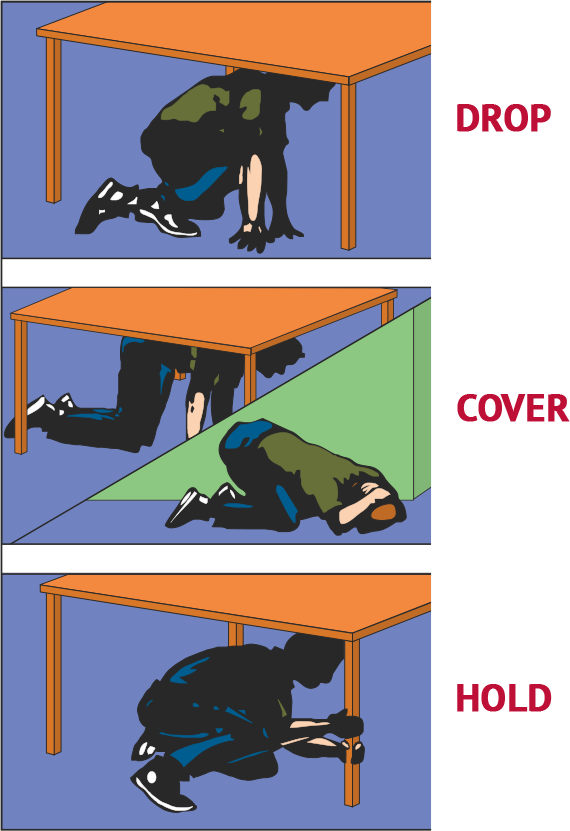For many people, the first instinct during an earthquake will be to run outside. This is an understandable but unsafe impulse that puts you in the path of falling objects and breaking glass. You will be safest during an earthquake if you memorize, practice, and follow these steps.
During an earthquake
If you are indoors, drop, cover, and hold. Take cover under a desk or table and hold onto it until the shaking stops. Avoid glass that might shatter and heavy objects that might fall on you. If you can’t get under a table or desk, crouch against a sturdy wall in a place where nothing heavy is above you and no windows are nearby.
If you are in a crowded area, stay calm and take cover where you are. Encourage others to do the same.
If you are outside, get into the open, away from buildings and power lines.
If you are driving, pull over and stop if it is safe, but stay inside your car. Try not to stop under trees, light posts, power lines, or signs. Avoid bridges, overpasses and tunnels.
If you are near the ocean, move quickly to higher ground or move several hundred yards inland.
If you are in the mountains or near unstable slopes, be alert for falling rock, snow, and other debris that could be loosened by the earthquake.

After an earthquake
If you live along the coast, move to higher ground and stay there until the authorities issue an “all clear.” Be alert for tsunami warnings, but if you experience a strong earthquake, there may not be time for a warning to be issued.
Check for injuries. Do not move a seriously injured person unless they are in immediate danger of further injuries.
Check for damage. Shut off the main gas valve only if a leak is suspected. Check oil and propane tanks including supports, pipes, and hoses. Shut off the power to your house if you suspect wiring is damaged.
Avoid downed power lines. Stay away from downed lines even if power appears to be off.
Remember that more earthquakes will follow a large earthquake. Some aftershocks may be large enough to do additional damage to weakened structures.
Practice
To be safe during an earthquake, these steps should be second nature. Participating in earthquake drills at home and at school will help your family to react quickly and correctly when the shaking starts. The Great Alaska ShakeOut is an excellent resource for earthquake drills and preparedness information. Please visit the Earthquake Center’s preparedness page to learn what you need to do before the next big earthquake.
Return to Are You Prepared.






